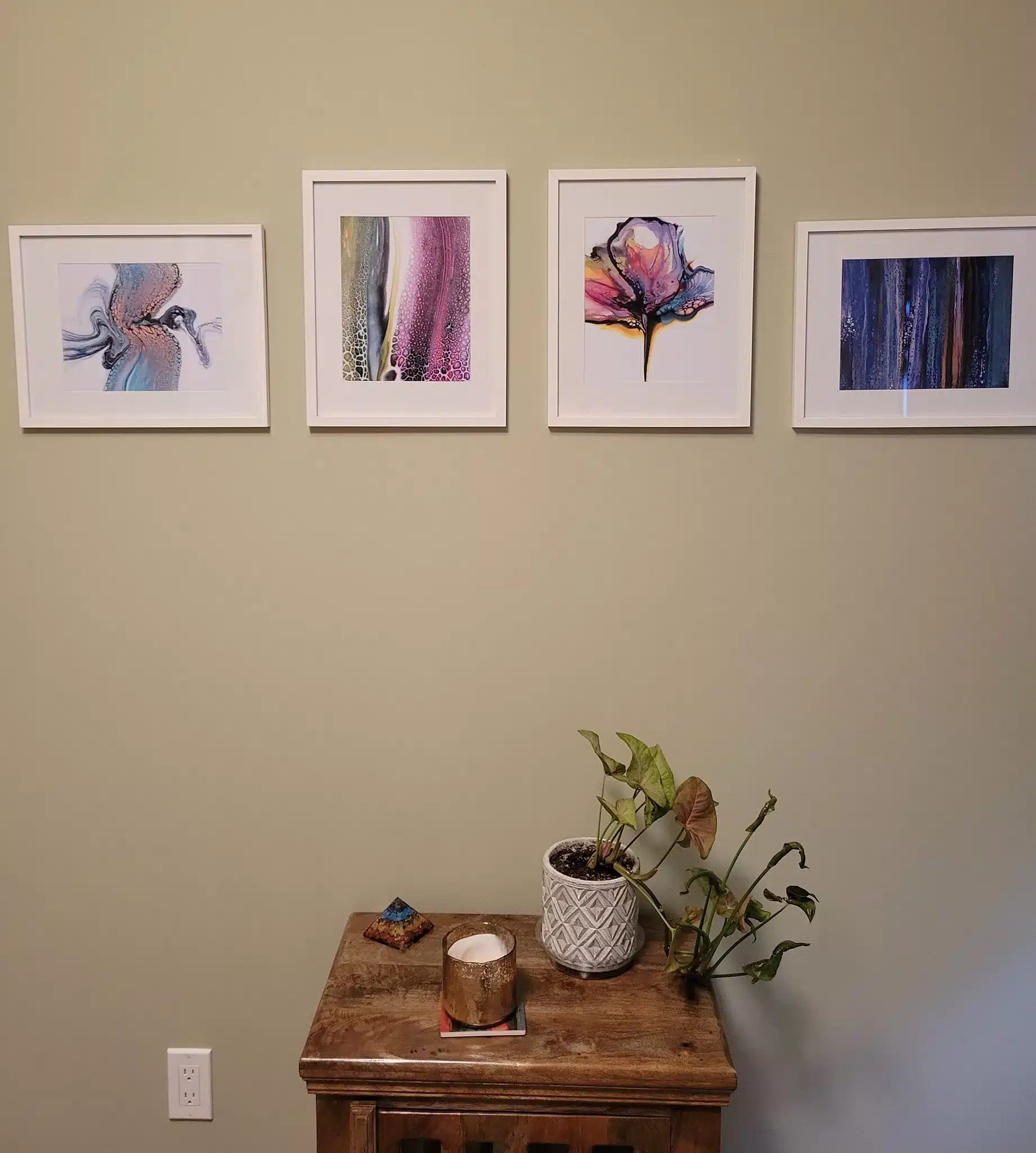Introduction to Abstract Art in Interior Design
In the world of interior design, abstract art has emerged as a powerful tool to create striking and memorable spaces. When strategically placed, abstract art can serve as a focal point, drawing attention and anchoring the room’s design. Whether your living room is a contemporary haven or a more traditional space, the inclusion of abstract art can elevate the overall aesthetic, adding depth, texture, and color.
Why Abstract Art?
Abstract art, characterized by its use of shapes, colors, and forms without necessarily representing real-world objects, offers limitless possibilities for expression. Its non-representational nature means that it can be interpreted in countless ways, making it a versatile choice for homeowners looking to create a unique focal point. Additionally, abstract art can easily complement various interior styles, from minimalist to eclectic, making it a universally appealing option.
Understanding the Scale and Proportion
The first step in using abstract art to create a focal point in your living room is to consider the scale and proportion of the piece. A large, bold piece of art will naturally draw the eye, making it an excellent choice for creating a focal point. Conversely, smaller pieces can be grouped together to form a gallery wall that commands attention.
When selecting a piece, consider the size of your living room and the wall where the art will be displayed. A large piece on a small wall can overwhelm the space, while a small piece on a large wall may not have the desired impact. Balance is key, and the art should complement the room’s dimensions without overshadowing the other elements.
Color Palette and Harmony
Color plays a crucial role in creating a cohesive and inviting living room. The colors in your abstract art should harmonize with the existing color palette of the room. If your living room features neutral tones, a vibrant piece of abstract art can add a much-needed pop of color, serving as a visual anchor. On the other hand, if your room is already rich in color, consider a piece with more muted tones to maintain balance.
Abstract art allows for a wide range of color combinations, so take the time to choose a piece that reflects your personality while enhancing the overall mood of the room. Whether you opt for contrasting hues or a monochromatic scheme, the key is to ensure that the art complements, rather than clashes with, the existing decor.
Considering Texture and Medium
Abstract art isn’t limited to just paintings; it can also include sculptures, mixed media, and textiles. The texture and medium of the artwork can add another layer of interest to your living room. A textured painting can create depth, while a metallic sculpture can add a modern edge.
When incorporating texture, think about how it will interact with other materials in the room, such as fabric, wood, or metal. A smooth, glossy painting might pair well with a plush velvet sofa, while a rough, textured piece might complement rustic wood accents. The goal is to create a harmonious balance between the art and the room’s other elements.
Centralizing the Focal Point
To truly make your abstract art the focal point of your living room, it should be strategically placed in a location that naturally draws the eye. The most common placement is above the sofa, as this area is typically the center of the room and where most people’s attention is directed.
When hanging the artwork, make sure it is at eye level. The center of the piece should be approximately 57 to 60 inches from the floor, which is the average eye level. This placement ensures that the art is easily visible and doesn’t require viewers to look up or down uncomfortably.
Using Lighting to Enhance the Art
Lighting is another critical factor in making your abstract art stand out. Proper lighting can highlight the art, bringing out its colors and details, and ensuring that it is a prominent feature in the room.
Consider using track lighting, wall sconces, or picture lights to illuminate the artwork. The lighting should be adjustable so that you can control the intensity and direction, allowing you to highlight different aspects of the piece as desired. Natural light can also play a role, but be mindful of direct sunlight, which can fade colors over time.
Creating Balance with Furniture and Decor
While the abstract art will be the focal point, it’s essential to ensure that the rest of the room’s decor doesn’t compete with it. The furniture and other decorative elements should complement the art, creating a balanced and harmonious space.
For example, if your artwork is bold and vibrant, consider more neutral or understated furniture to avoid overwhelming the senses. On the other hand, if the art is more subtle, you can afford to be a bit more adventurous with your furniture choices. The key is to create a cohesive look where the art is the star, but the rest of the room supports and enhances it.
Creating a focal point in your living room with abstract art requires thoughtful consideration of various elements, including scale, color, texture, and placement. By carefully selecting and positioning your artwork, you can transform your living room into a space that is not only visually stunning but also a reflection of your personal style.
Abstract art offers endless possibilities, and with the right approach, it can become the defining feature of your living room, bringing together all the other elements in a cohesive and harmonious design.


